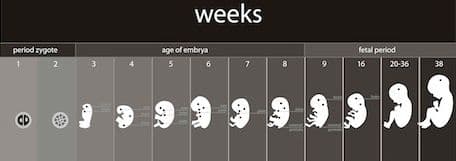Fetal Growth Calculator
Ultrasound Tools
Obie Editorial Team
The fetal growth calculator calculates your baby's growth during pregnancy. Enter several estimated weights (EFW) at different gestational weeks and we will provide your baby's growth curve. In general, below the 10th percentile is too low; above the 90th percentile is too high.
Factors affecting fetal growth
The growth of the fetus (and the percentile of the ultrasound sonogram) during pregnancy is dependent on many factors such as genetic, placental and maternal factors.
Under normal circumstances, the fetus' inherent growth potential yields a newborn of appropriate size with a wide range of normal sizes. The maternal-placental-fetal units act in harmony to provide the needs of the fetus while supporting the physiologic changes of the mother. Limitation of growth potential in the fetus is comparable to failure to thrive in the infant. The causes of both can be intrinsic or environmental.
What is macrosomia?
Macrosomia is defined when a baby is either over 4,000 or over 4,500 grams. It is an absolute number, not relative to weeks of the pregnancy.
What is small for gestational age (SGA)
Small for gestational age (SGA) is defined when the newborn baby is below the 10th %tile for the gestational age. The definition depends on the exact week of the pregnancy, and sometimes can be adjusted for the ethnical group. Small for Gestational Age (SGA) is a term that refers to an infant or fetus in the uterus that is smaller in size than is expected for an infant or a fetus of similar gender, genetic heritage, and gestational age. SGA or Intrauterine Growth Restriction (IUGR) are usually identified by ultrasound before birth or an examination after birth. Birth weight below the 10th percentile of the population, corrected for gestational age, has been the most widely used definition of SGA and IUGR.
What is intrauterine growth restriction (IUGR)
Intrauterine growth restriction (IUGR) is a diagnosis made inside the uterus, prior to birth, when the fetus falls below a certain %tile (5th or 10th %tile) for the gestational age. Intrauterine growth restriction (IUGR) is usually diagnosed when the fetus falls below the 10th percentile curve for the gestational age. That's why many doctors order a sonogram around 32-34 weeks to make sure they know how well the fetus is growing.
Read More










